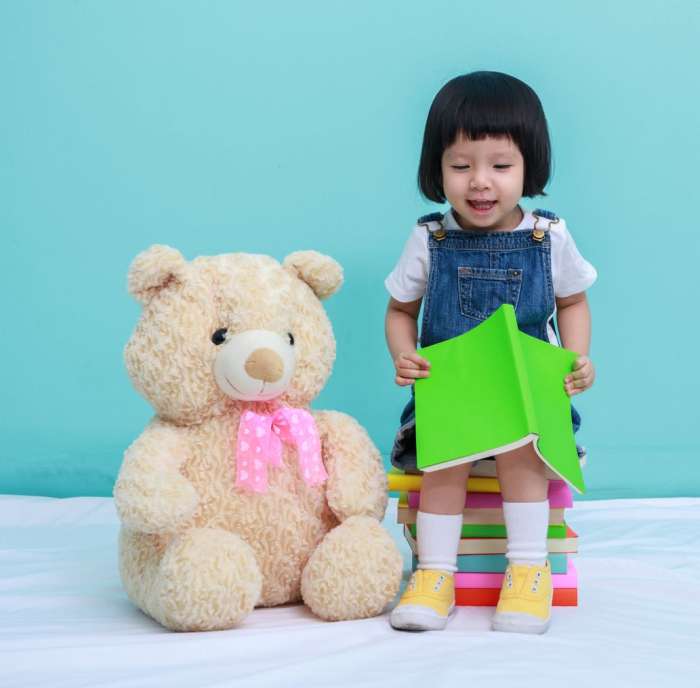Choosing a preschool for your child can be difficult for some parents. When looking into preschool programs, parents want an environment that is safe and nurturing but also fosters child development. Some areas of the country, like cities and central suburbs, have a wealth of programs to choose from, while parents in rural communities likely have only a few options.
There are many different types of preschool as well. Some preschool programs are stand-alone programs that only begin at the age of three or four. Others are part of child care centers or the public school system. There are also different educational philosophies to consider, for example, Montessori, Waldorf, Reggio Emilia, Highscope, and play-based.
When choosing the right preschool for your child, there are a few factors I recommend parents consider.
- Your preferred educational philosophy
- Your child’s personality or temperament
- Your budget
- Interactions between children and staff members
- Accreditation
Related: Waldorf or Montessori: Which is Best?
There is no one-size-fits-all approach to what constitutes a “good preschool.” However, considering the following points will help you choose the best preschool for you and your child.
Early Childhood Educational Philosophies

Below are brief descriptions of the main philosophies relating to young children and how they learn. I encourage you to read more about any that strikes a chord with you. Many of these philosophies have overlapping qualities.
A Parent's To-Do List for the Summer Before Your Teen Heads Off to College
The summer before your teen heads off to college for the first time seems to fly by faster than any previous summers! Once your teen has committed to the school of their choice—and continues to deny they have “Senioritis”—it’s time for them to hunker down and tackle all the last-minute stuff. Read More
Montessori
Montessori schools are named after physician and educator Maria Montessori. Her belief system is one of early childhood education's most popular and widely held philosophies. There are estimates of 4,000 to 8,000 private and 500 public Montessori schools in the U.S. alone.
The Montessori approach is play-based and provides children with open-ended materials to explore and experiment with; there is teacher guidance, but it is a child-led curriculum. Montessori classrooms are often mixed age groups, providing some social benefits but also drawbacks as there may only be one or two other children your age.
Its main tenants are that it is child-led, self-directed, and hands-on. Since a child learns best through play, all quality preschool programs will have some Montessori elements.
Who Is It Best For?
- Independent & Self-motivated children
- Children who don’t need a lot of direction
- Naturally social children
Reggio-Emilia
The Reggio-Emilia approach is named after the town in Italy where it was founded. Its central belief is that each child has a unique way of expressing themselves and is highly sensory-based. The teacher-child relationship is a partnership in which they learn and grow together.
Reggio-Emilia classrooms are full of sensory stimulating materials and often include many natural objects.
As the teacher learns more about the individual children in their class, they will adjust and adapt the materials and activities available; this is also known as an emergent curriculum. Signs of an emergent curriculum in any preschool program are a good sign of a high-quality program.
Who Is It Best For?
- Creative, artistically, and musically motivated children
- Both Independent & more tentative children who need a social boost
- Children who love sensory play and messes
Waldorf

Rudolph Steiner started the Waldorf philosophy in the early 20th century. It is based on the emergent curriculum idea that the classroom, materials, and subjects taught should evolve around the interests of the children in the classroom.
There are no prepackaged curriculums, and lessons are planned no more than a week and sometimes days in advance. Ideas are born naturally from teacher observations. So, for example, they may begin by learning about apple trees, which develops into an interest in caterpillars, insects, pollination, and so on.
A Waldorf education allows a child to learn and grow at their pace and focuses less on age-specific milestones. It is less focused on academic achievements and more focused on learning by doing.
Who Is It Best For?
- Independent & Self-motivated children
- Children who don’t need a lot of direction
- Children at varying developmental levels
Highscope
The Highscope curriculum is a prepackaged preschool curriculum daycare center, and schools can purchase and implement it in their school. It is not a philosophy but a gathering of best practices to guide preschool teachers in age-appropriate instruction.
Highscope emphasizes the teacher-child relationship, formal and non-formal assessments, a predictable daily routine, and the setup of the environment and materials.
The Highscope curriculum provides a framework for schools and teachers to use but still allows for freedom of choice regarding classroom activities, free play, and the creation of the learning environment. Theoretically, a school or teacher could use the Highscope curriculum along with Montessori, Reggio-Emilia, or Waldorf.
Another similar program is the Creative Curriculum. Public schools, Headstart, and chain child care programs favor these programs because they provide a basis to build and help guide new and young teachers and offer continuity.
Play-based

A play-based environment is one where the majority if not all, learning is done via play. Play is the best way for children to learn, and parents should be wary of preschool programs that emphasize monthly, packaged lessons, worksheets, and flashcards and push academic skills in a school-like atmosphere.
Children in preschool and Pre-K will learn numbers, colors, shapes, and letters through well-intentioned activities, toys, and teacher-child interactions.
All quality preschools, whether through a child care center, public school, or private preschool, will be play-based.
Consider Your Child's Personality
When choosing a preschool program, consider how your child learns best and where their interests lie. While any quality program will benefit your child and help them grow and develop their natural skills, you want an environment that feels safe and welcoming to them from the start.
Staff Interactions & Classroom Environment

A significant indicator of a quality program is how the staff interacts with your child and the classroom environment.
When touring a school, observe the following:
- Are children greeted warmly upon drop-off?
- Is staff spread out throughout the room and engaged with the children?
- Are the play areas organized, labeled, and free of dirt?
- Are there examples of the children’s work displayed?
- Are children playing? Do they seem happy?
- Does the classroom seem busy and noisy but calm (not chaotic or out of control)
- Is a daily schedule posted complete with nap times, outdoor or gross motor time, and meal times?
- Are child ratios being kept? For example, in Maryland, where I live, the ratio for three-year-olds is 1 teacher for every 10 children, whereas, in Kansas, it is 8 to 1, but in Georgia, it is 15 to 1. You can find a list of each state’s ration broken down by age here.
- Are there defined play areas for dramatic play, building, engineering, science, sensory, art, etc.?
Budget & Location
An unfortunate barrier for many parents is their budget and the location of their preferred schools. In addition, some schools also have lengthy waiting lists, which require a hefty deposit upfront.
When choosing your child’s preschool, be realistic about what you can afford, especially if you plan to have more than one child in childcare at the same time. Childcare is one of the biggest costs parents face. For example, in New York, it costs an average of $968 per month for a child aged 3-5 years old, but in Alabama, it is less than half that at only $432 per month.
If you are not working or only working part-time, opt for part-time preschools to help your child build social skills and have exposure to a school-like setting.
Keep in mind that not all good preschools are expensive preschools. However, you may be able to find a diamond in the rough with a bit of research and touring schools.
Another consideration is how far the location is from your home or work. For example, if you’re called to pick your child up because they are sick, can you or your spouse get there in a timely manner? Once you pick your child up, will you have another 45-minute drive home? Lastly, how late are they open, and can you get there at the end of your work day before they close?
Accreditation

The last thing to consider, and personally, I say consider this lightly, is whether or not the school is accredited. There is no national standard for the accreditation of private preschools, and it is voluntary process schools choose to go through.
As someone who has been a teacher for two different schools that underwent accreditation, I have this insight. The accreditation process often requires a lot of busy work from the teachers. Unfortunately, this busy work of documenting and creating proof takes time away from your child and the teacher’s ability to plan and implement the high-quality program the accreditation badge supposedly proves they offer.
That being said, many parents feel better when they see a preschool is accredited because they know it has met specific standards. The National Association for the Education of Young Children or NAEYC is considered the gold standard of preschool accreditations.
Other accreditation programs are:
- American Montessori Society (AMS)
- Association of Christian Schools International
- Accredited Professional Preschool Learning Environment (APPLE)
- National Early Childhood Program Accreditation (NECPA)
More important than an accreditation badge is the feeling you get when you visit or tour a school. If the children enrolled are happy, the teachers are engaged and welcoming, and the classrooms are organized, cheerful, and busy, those are the signs of a quality program.



